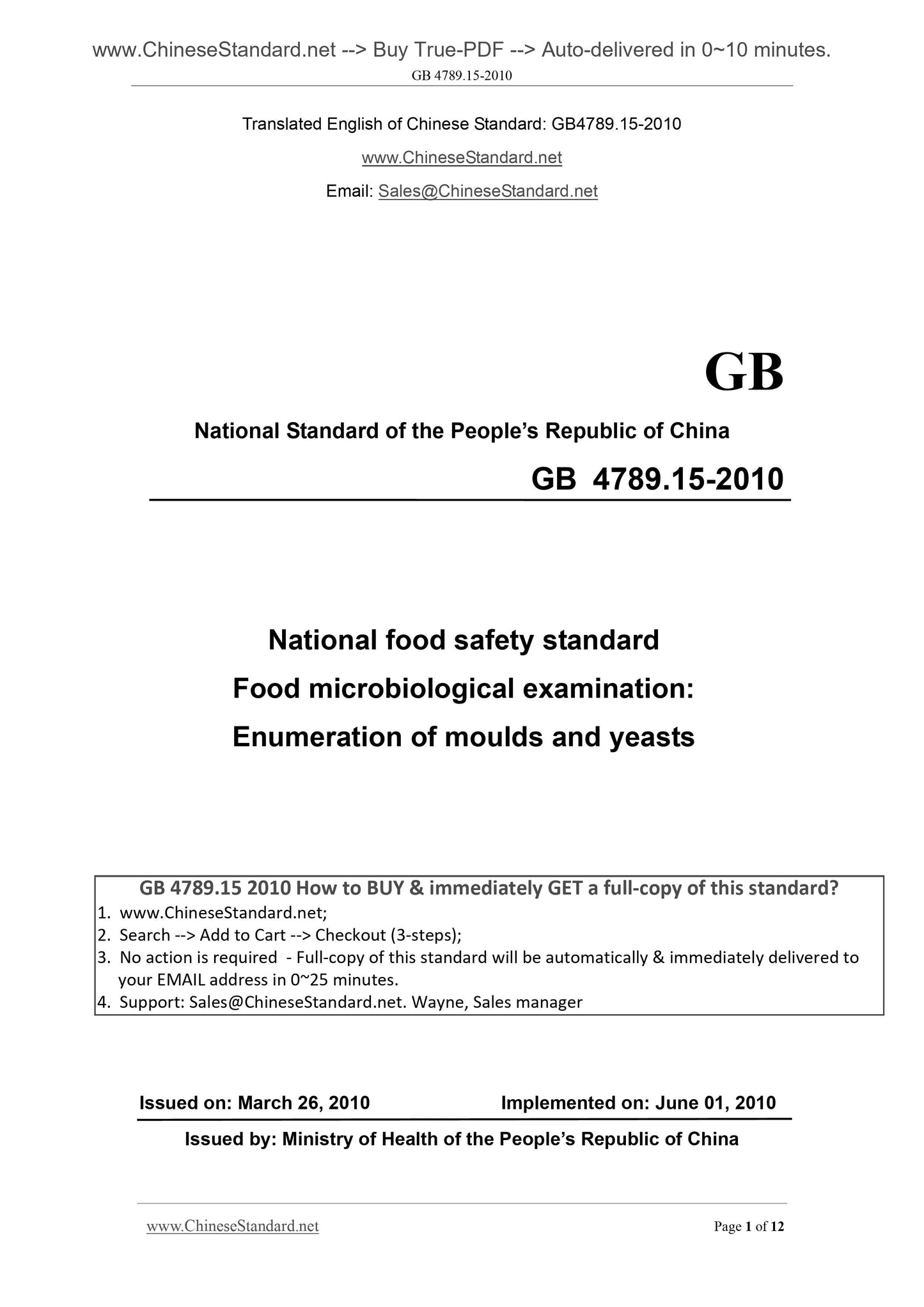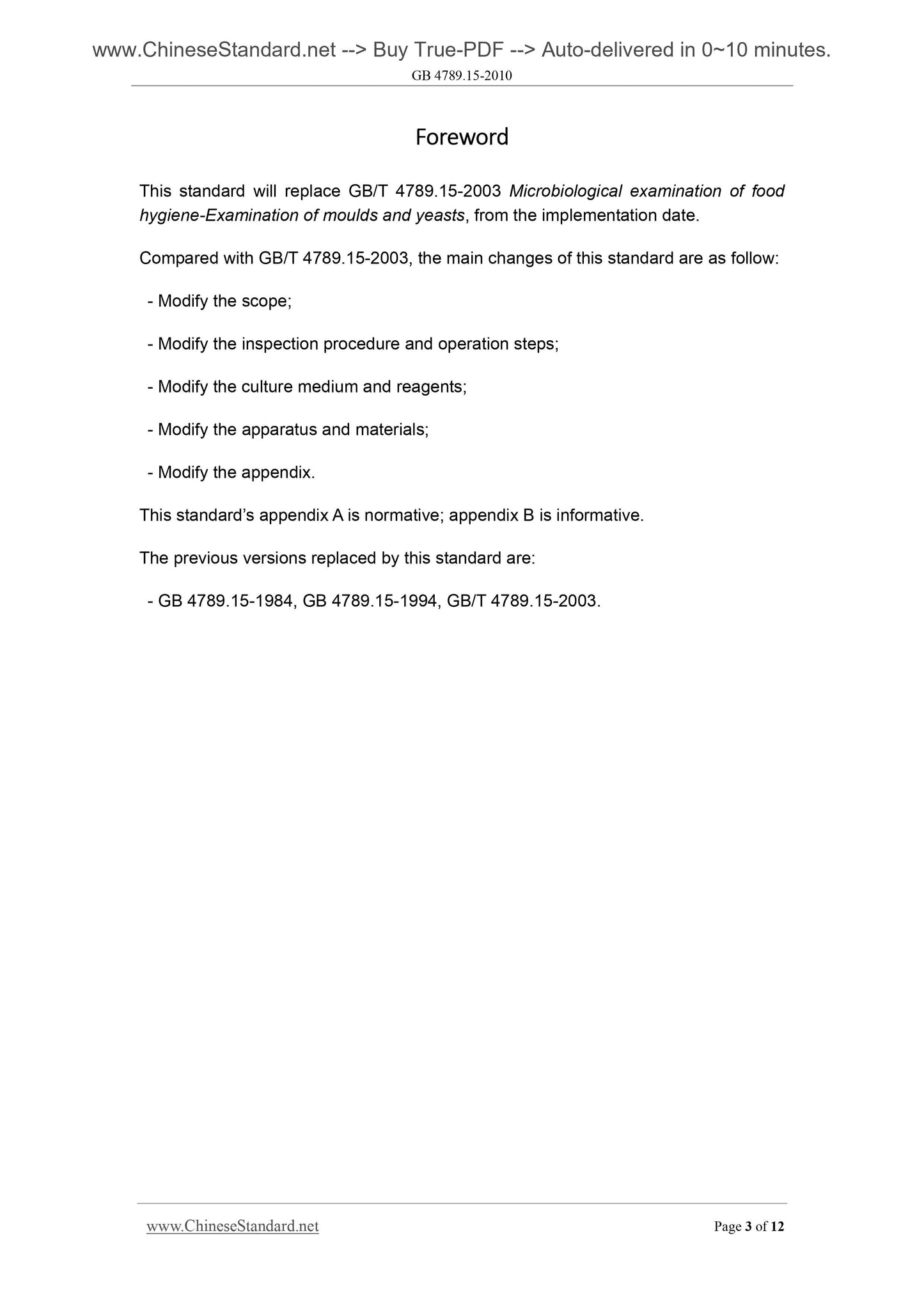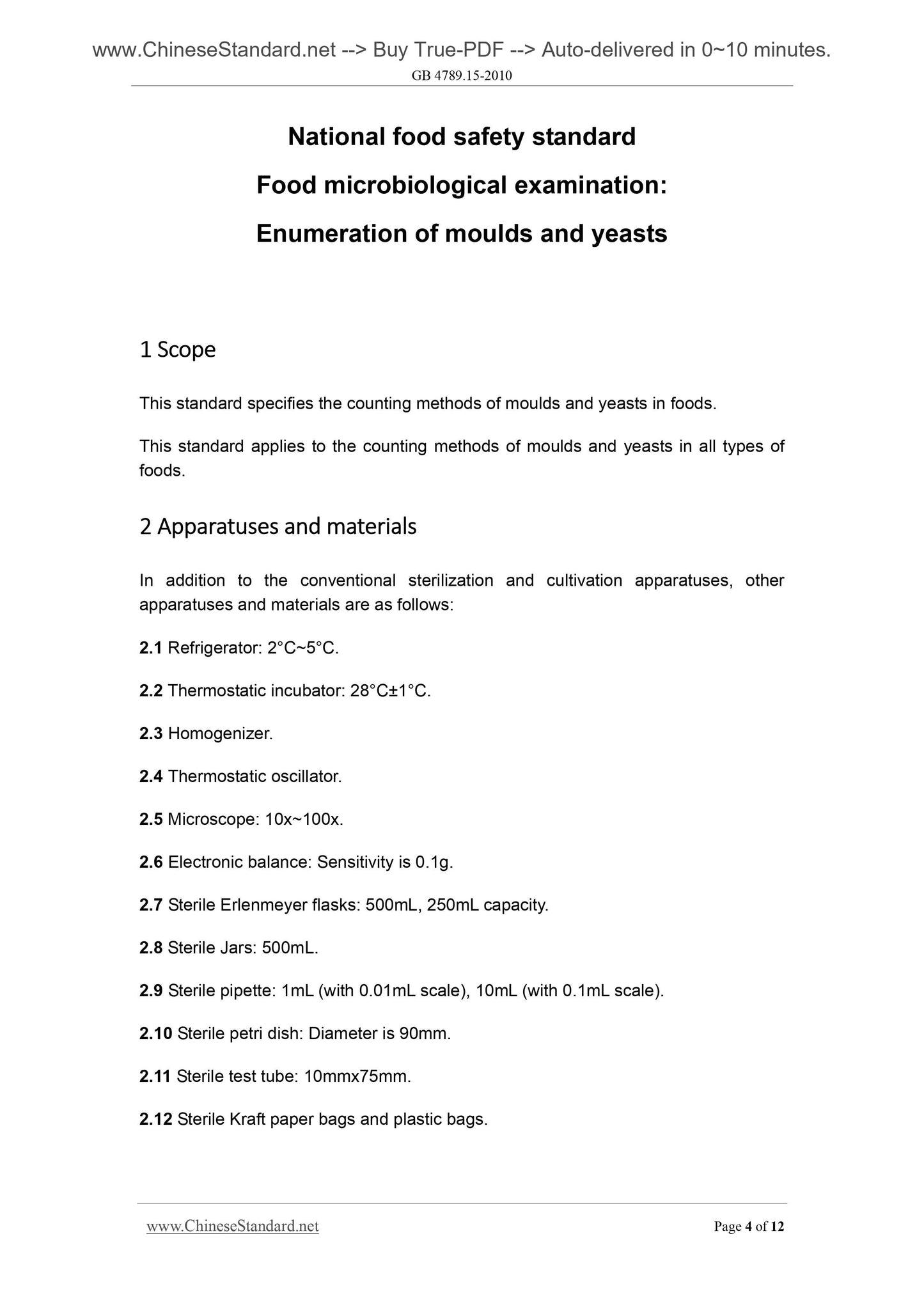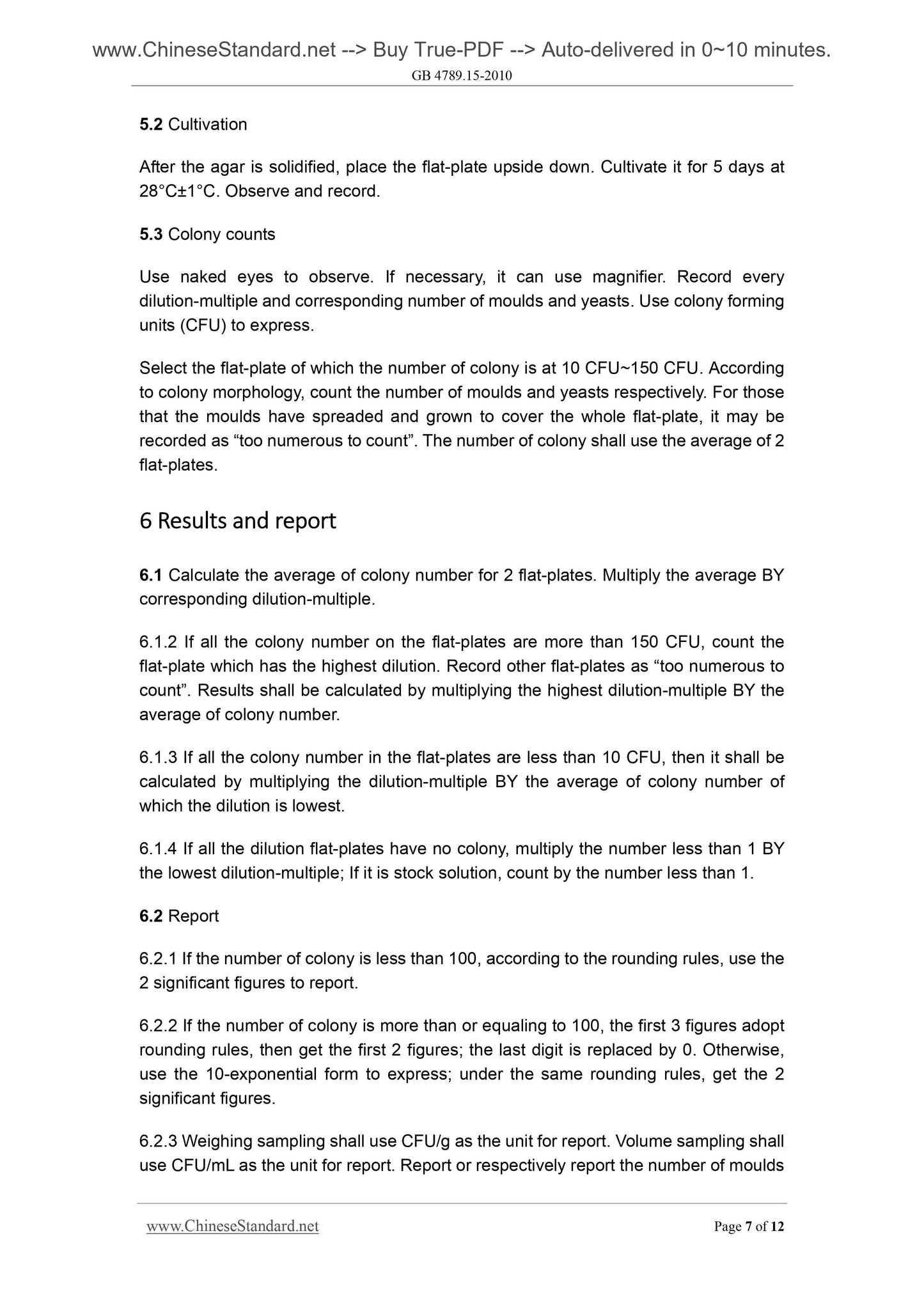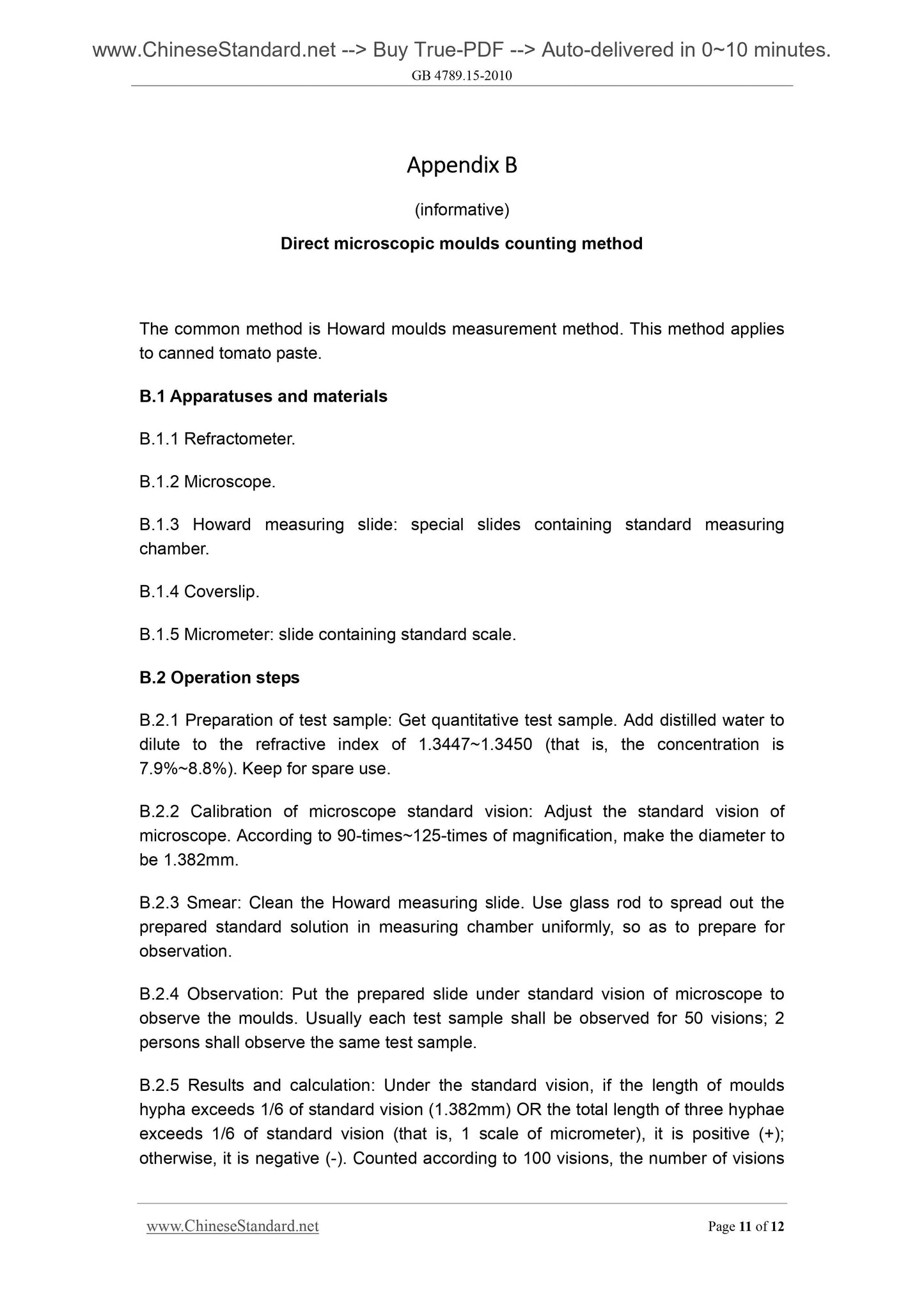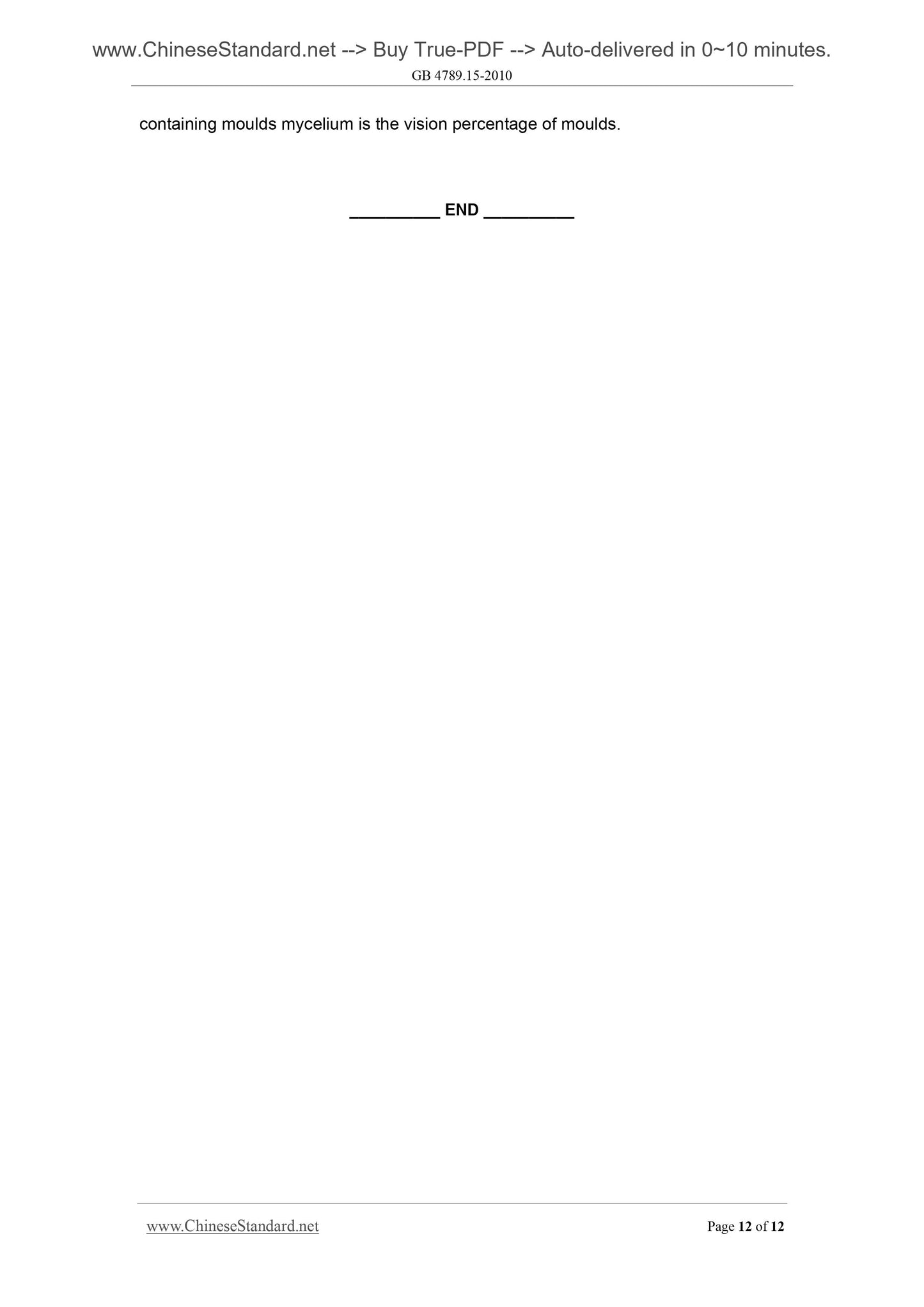1
/
of
7
PayPal, credit cards. Download editable-PDF & invoice in 1 second!
GB 4789.15-2010 English PDF
GB 4789.15-2010 English PDF
Regular price
$70.00
Regular price
Sale price
$70.00
Unit price
/
per
Shipping calculated at checkout.
Couldn't load pickup availability
GB 4789.15-2010: National food safety standard -- Food microbiological examination: Enumeration of moulds and yeasts
Delivery: 9 seconds. Download (and Email) true-PDF + Invoice.Get Quotation: Click GB 4789.15-2010 (Self-service in 1-minute)
Newer / historical versions: GB 4789.15-2010
Preview True-PDF
Scope
This standard specifies the counting methods of moulds and yeasts in foods.This standard applies to the counting methods of moulds and yeasts in all types of
foods.
Basic Data
| Standard ID | GB 4789.15-2010 (GB4789.15-2010) |
| Description (Translated English) | National food safety standard -- Food microbiological examination: Enumeration of moulds and yeasts |
| Sector / Industry | National Standard |
| Classification of Chinese Standard | C53 |
| Classification of International Standard | 07.100.30 |
| Word Count Estimation | 8,865 |
| Date of Issue | 2010-03-26 |
| Date of Implementation | 2010-06-01 |
| Older Standard (superseded by this standard) | GB/T 4789.15-2003 |
| Regulation (derived from) | Circular of the Ministry of Health (2010)7 |
| Issuing agency(ies) | Ministry of Health of the People's Republic of China |
| Summary | This Chinese standard specifies the food molds and yeasts (moulds and yeasts) counting method. This standard applies to all types of food molds and yeasts counts. |
Share
